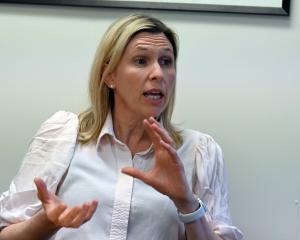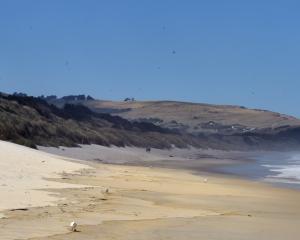In "Swings and roundabouts in ice melt, figures show" (ODT 13.10.09) Dr Jock Allison invites climate scientists to present counter-evidence in a user-friendly manner to his opinion that recent changes in sea-ice extent are not particularly alarming from a global-warming point of view.
Sea ice reflects around 80% of the sun's energy that falls on it.
As a result, the ocean underneath it remains cooler.
This is critical for the earth to balance the excess heat collected around the equator and maintain a stable average global temperature.
The end-of-summer sea-ice extent is the value most often used to examine long-term trends in the Arctic.
This is because the sea ice left at the end of summer is typically the thickest and most resilient to future melt and its extent is therefore useful as a measure of the health of the Arctic sea-ice cover.
Also, almost all the sun's energy that reaches the polar regions does so during summer.
Scientists have been able to measure global sea-ice extent since 1978, when the first of a series of satellites was launched.
Since this time, the summertime sea-ice extent in the Arctic has retreated at an average rate of roughly 750,000sq km (almost three times the area of New Zealand) per decade, though there has been variability from year to year and there is a strong indication the rate accelerated in the late 1990s.
Despite increases in both 2008 and 2009, they have still been the second and third-lowest years in the record after 2007.
The ice remaining in the Arctic this year is the youngest and thinnest on record, which makes it look unlikely that this is part of a major recovery.
Arguments against this evidence or its significance often bring attention to the relatively short time period covered by the satellite data.
But before satellites there were observations from ships, aircraft and drifting scientific stations that spanned most of the Arctic Ocean.
Russian sea-ice charts dating back to 1933 indicate that the currently low extent of Arctic sea ice is unprecedented in at least 76 years.
During this time, there were decade-long periods of advance and retreat, but the overall trend has been one of decline.
Just as we have seen partial recoveries in the past, we can expect the sea ice to recover some of the lost area in the future.
This is consistent with climate models, which predict a continuation of the long-term decline over the next several decades.
Perhaps the most compelling, and concerning, evidence for long-term change in Arctic sea ice is the loss of thick sea ice from the central Arctic that survives from year to year.
This older, thicker ice is slow to accumulate and its area remained relatively stable during the retreats and advances earlier in the 20th century.
However, it has shown significant losses in recent years.
The loss of the oldest thickest ice from the Arctic leaves the remaining sea ice younger, thinner and more susceptible to further melting.
This creates a cycle that enhances the effects of warmer temperatures in the Arctic and which is probably contributing to the accelerated retreat seen since the late 1990s.
Since 1979, the average thickness of Arctic sea ice has halved and this year only half the ice remaining was more than one year old.
Another source of misunderstanding about the global state of sea ice is the absence of a similar trend in the southern hemisphere.
Though this may appear contradictory, it is to be expected since the Arctic and Antarctic are two very different environments for sea ice.
The Arctic Ocean is enclosed by land, whereas the Antarctic is surrounded by the Southern Ocean, in which there is a current that encircles the continent and buffers it from changes in the rest of the global circulation.
The Antarctic Peninsula, which extends north beyond this current, is the location of the some of most rapidly rising temperatures on the planet.
There are also sea-ice growth processes occurring in the Antarctic that are insignificant in the Arctic.
The sea-ice group at the University of Otago has recently returned from Scott Base, where its members carried out a winter-long study of the effect of the Ross Ice Shelf on the growth of sea ice.
If the effect is significant, it could be an additional explanation as to why Antarctic sea ice is not declining like that in the Arctic, which lacks large ice shelves.
But we shouldn't be too complacent about this.
What is gained by the sea ice is caused by melting of ice that originated on the land; and it is this ice melt that eventually causes sea level to rise.
Although there are uncertainties regarding the role of clouds in the near-future climate, the consensus of the majority of climate scientists around the world is that the retreat of sea ice in the Arctic will continue well into the 21st century and will promote further increases in global temperature.
The expected consequences of this include sea-level rise, changes in rainfall distribution and major ecosystem shifts.
All of these are already being observed.
Most of the information presented here is available on the internet from sites such as the United States National Snow and Ice Data Center (nsdic.org).
• This evening, Dr Tony Gow of the US Cold Regions Research and Engineering Laboratory, will deliver a lecture entitled "Past Climates: 50 years of deep ice core drilling in Antarctica and Greenland" in the St David Lecture Theatre at the University of Otago at 5.30pm.
• Dr Andy Mahoney is a researcher at the University of Otago's department of physics. He has spent eight years studying sea ice around the Arctic and has just returned from a winter in the Antarctic studying the growth of sea ice.












